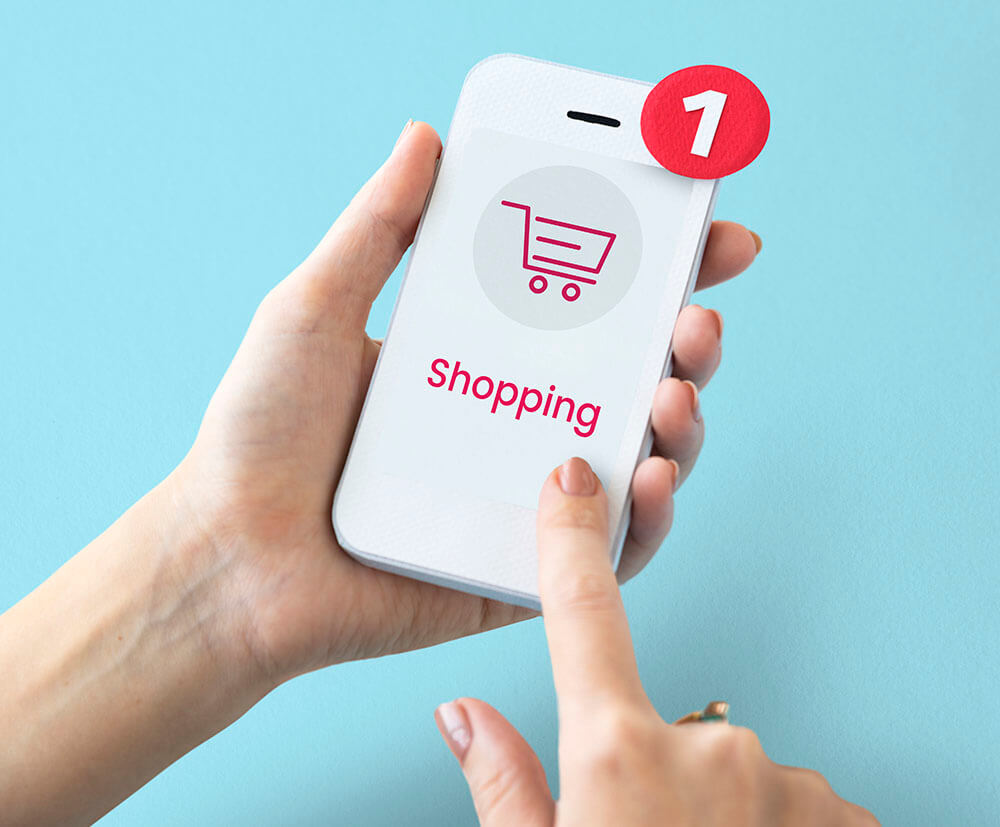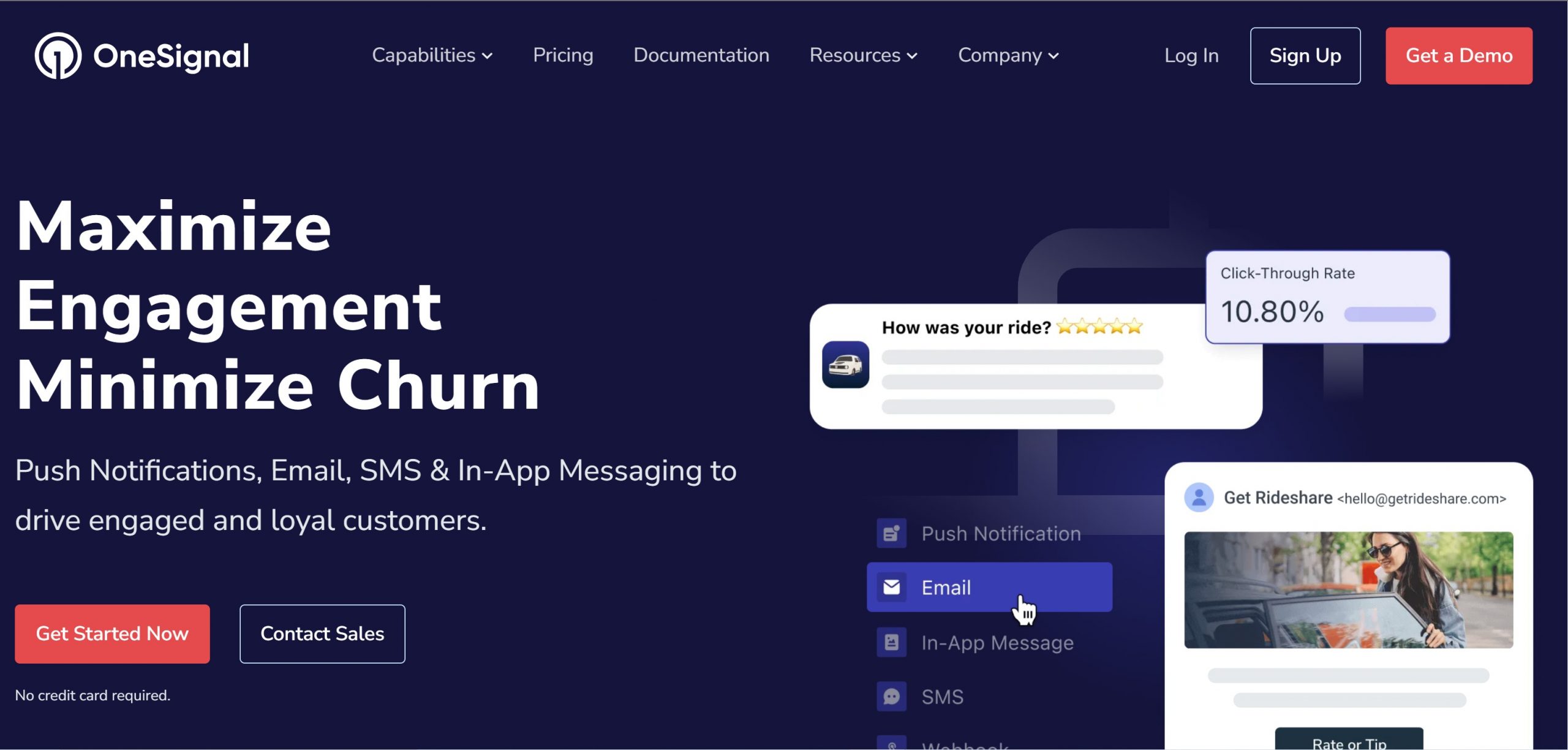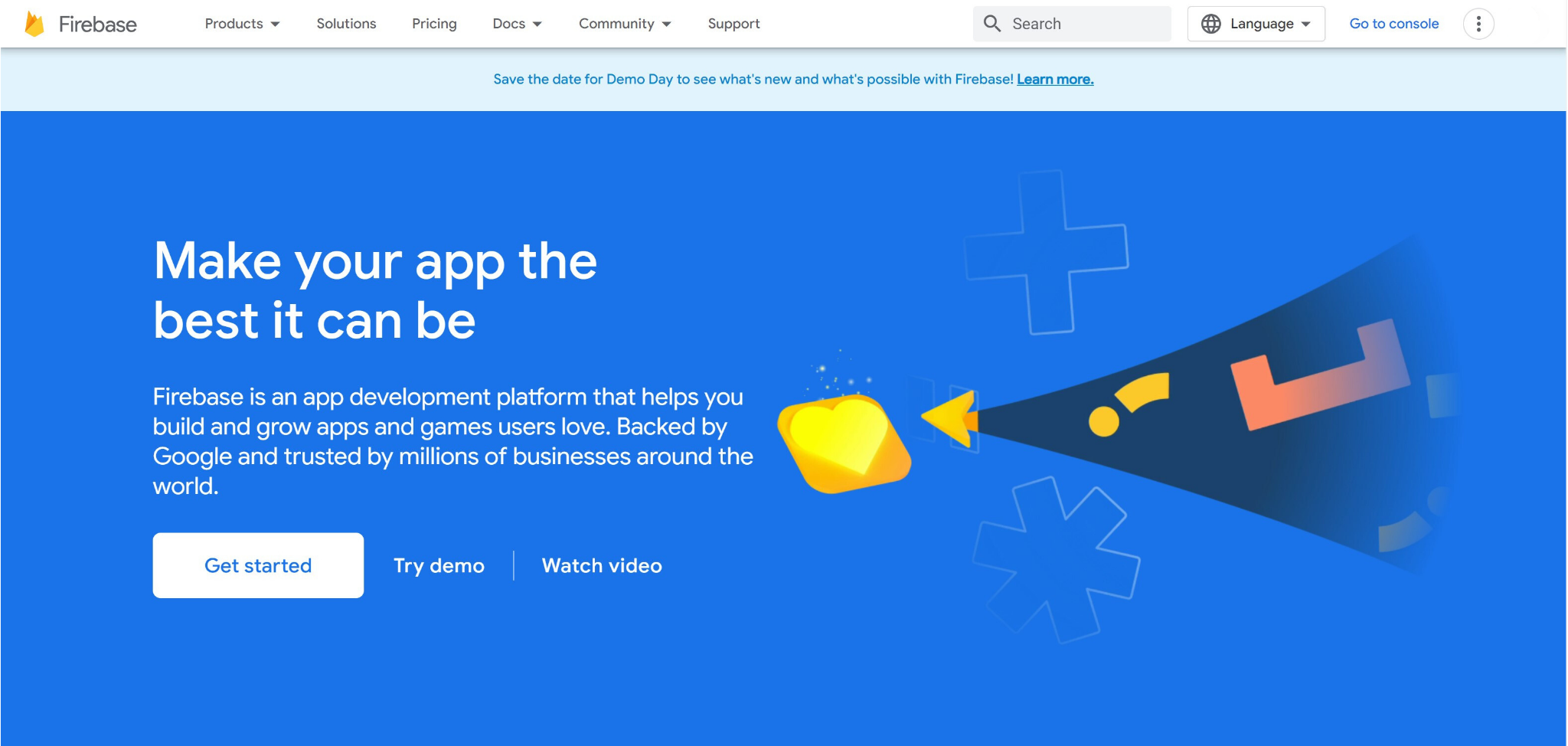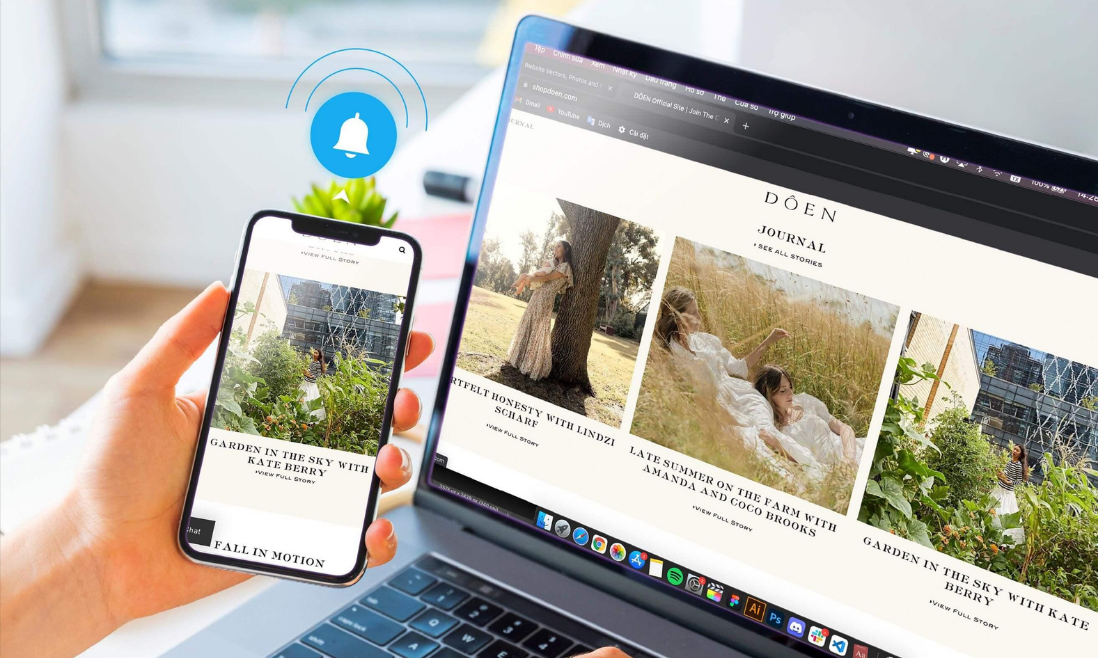Web push notifications have transformed the way websites interact with their audiences in today’s digital age. These subtle, attention-grabbing messages have become a popular website tool, providing a direct line of connection with users.
Websites may utilize web push notifications to break through the digital noise and communicate with visitors in real-time, increasing engagement and driving conversions.
Understanding the art of web push notifications is critical for success in the competitive online market, whether you’re an e-commerce shop wanting to recover abandoned carts or a content provider looking to keep your audience engaged.
In this blog, let’s go through the area of web push notifications, their impact, benefits, and best practices for utilizing this powerful technology.
Web Push Notifications Overview
Exploring the basics of web push notifications, how they operate, and their valuable role in your digital strategy. Whether you’re new to this technology or seeking deeper insights, this overview introduces you to the world of swift and engaging communication.
What Are Web Push Notifications?

At their core, web push notifications are short, attention-grabbing messages delivered directly to users through their web browsers or mobile devices. They’re an effective way for websites to communicate with their audience, and they can convey a wide range of information, from breaking news to special offers, event updates, and personalized content recommendations.
Key Characteristics of Web Push Notifications
To understand the power of web push notifications, it’s important to grasp their key characteristics:
- Direct Delivery: Push notifications reach users directly on their devices, ensuring that important messages are not lost in crowded email inboxes or social media feeds.
- Timely and Real-time: They are instant, enabling websites to provide real-time updates on events, news, sales, and more.
- Engaging and Attention-Grabbing: Push notifications are designed to capture the user’s attention with concise and compelling content.
- Opt-In Basis: Users can opt in or out of receiving push notifications, preserving their control over their browsing experience.
- Platform Agnostic: These notifications work across various platforms, including desktop, mobile, and even Progressive Web Apps (PWAs).
- Customizable: Websites can personalize notifications, tailoring them to user preferences, demographics, and behavior.
- Segmentation: Advanced push notification services allow websites to segment their audience, ensuring that messages are relevant to specific user groups.
Impact of Web Push Notification

When it comes to web push notifications, the impact cannot be overstated. These notifications serve as a vital bridge between your website and your audience, capturing their attention in a way that other communication methods often struggle to achieve.
A Direct Line to Your Audience
Web push notifications provide a direct and unobtrusive way to reach your audience. Unlike emails that may be buried in overflowing inboxes or social media updates that might go unnoticed in a cluttered feed, push notifications appear right on the user’s desktop or mobile screen, where they can’t be missed. It’s akin to having a personal conversation with your audience, even when they’re not actively browsing your site.
Instantaneous Engagement
The impact of web push notifications is immediate. They are designed to grab users’ attention with eye-catching alerts, prompting them to take action or explore the content you’re offering. Whether you have breaking news to share, a limited-time offer, or an exciting product release, push notifications to ensure that your audience is informed in real time.
Enhancing User Engagement

For websites, user engagement is often the key to success. The longer users stay on your site, the more likely they are to convert, whether that means making a purchase, reading an article, or signing up for a service. Web push notifications play a crucial role in rekindling user engagement by enticing users to revisit your website.
Push Notifications in Action
To illustrate the impact of web push notifications, consider the following scenarios:
- E-commerce: Imagine a user who added items to their shopping cart but abandoned it before making a purchase. With push notifications, you can send a friendly reminder about the items left in the cart, prompting the user to return and complete the transaction. This can significantly increase conversion rates and sales.
- News Websites: For news outlets, the ability to deliver breaking news directly to users’ screens is invaluable. Users no longer have to actively seek out the latest updates; instead, they receive them in real time, leading to increased user engagement and loyalty.
- Content Creators: Bloggers, podcasters, and video creators can use push notifications to notify their audience about new content. This immediate access to fresh material keeps users engaged and encourages them to return regularly.
- Event Organizers: Event and ticketing platforms can send push notifications about event updates, last-minute ticket availability, and special promotions. This not only engages existing users but also attracts new attendees.
Advantages of Sending Web Push Notifications from Websites

Let’s dive into the many advantages web push notifications offer:
Increase Engagement Rate
The primary benefit of web push notifications is their ability to increase user engagement. These notifications can prompt users to revisit your website, explore new content, and take desired actions. For instance, a news website can send breaking news alerts to keep readers informed and engaged.
Boost Traffic and Conversion
Beyond engagement, web push notifications can significantly boost traffic and conversions. E-commerce sites can use push notifications to recover abandoned shopping carts or alert users about ongoing sales, driving a direct increase in revenue.
Enhance Brand Awareness

Web push notifications serve as a direct channel for keeping your brand in front of your audience. With well-designed notifications, you can reinforce your brand’s image and message, making it more memorable and recognizable.
Bring a Better Experience for Users
Relevance is the key to a better user experience. When users receive notifications that align with their interests and preferences, it creates a sense of personalization and satisfaction, increasing the likelihood of return visits.
Personalization and Targeting
Web push notifications can be highly customized. You can segment your audience based on behavior, demographics, or preferences, sending tailored content, product recommendations, and special offers to specific user groups.
Real-Time Communication
In an age where information travels at lightning speed, real-time communication is essential. Push notifications allow you to instantly inform your users about time-sensitive updates, such as breaking news, flash sales, or emergency alerts.
Cart Abandonment Recovery

For e-commerce websites, cart abandonment is a common challenge. Push notifications can serve as friendly reminders about items left in the cart, encouraging users to return and complete their purchase.
Ways To Send Push Notifications From Websites
OneSignal

One Signal is a renowned and user-friendly platform, offering a free service for sending push notifications. It stands out for its accessibility and is particularly well-suited for small businesses and websites with budget constraints.
One Signal enjoys a solid reputation in the industry, known for its reliable service and user-friendly interface. One Signal is a versatile platform, supports user segmentation, scheduling, and customization.
Key Features:
- User-Friendly: One Signal’s user interface is designed to be intuitive, making it accessible for users with varying levels of technical expertise.
- Customization: You can tailor your notifications to match your brand’s style, creating a cohesive user experience.
- Scheduling: Plan and schedule notifications to be sent at the optimal time for your audience.
- Segmentation: One Signal allows you to target specific user groups, ensuring that your messages are relevant to the right peop
Firebase

Platform Overview:
Firebase is a Google-owned platform known for its cloud-based services, which include real-time databases, hosting, and, of course, web push notifications. It’s trusted by businesses and developers worldwide for its seamless integration and robust features.
Firebase is a powerful and versatile platform that offers a comprehensive set of tools for implementing web push notifications. Whether you’re looking to enhance your notification strategy or explore its broader capabilities, Firebase has a lot to offer.
Key Features:
- Web Push Notifications: Firebase provides a user-friendly and efficient solution for sending web push notifications, allowing you to engage your audience effectively.
- Real-time Database: With Firebase’s real-time database, you can create dynamic, data-driven notifications that respond to user behavior in real time.
- Hosting: Firebase offers hosting services that ensure your notifications are delivered promptly and efficiently, enhancing the user experience.
PWA Technology

Progressive Web Apps (PWAs) have gained significant attention as a technology that fuses the strengths of web and mobile applications, integrating seamlessly with push notifications.
PWAs are widely acknowledged for their ability to deliver a unified user experience, blending web accessibility with app-like features. PWAs offer offline functionality, immediate updates, and a rich user experience.
PWA technology allows business owners to send out push notifications. It uses a single codebase to provide native push notifications to any website, browser, and platform. The ability to interact with users without a native app is the strength of PWA push notifications.
Key Features:
- App-Like Experience: PWAs provide a familiar mobile app experience but are directly accessible through web browsers.
- Offline Functionality: PWAs can operate offline, allowing users to access content even without an internet connection.
- Push Notifications: PWAs support push notifications, making them an ideal choice for websites seeking to offer a cohesive and engaging user experience.
Once your site is integrated with PWA, you can send unlimited, cost-effective push notifications directly from your backend, eliminating the need for third-party fees. Additionally, PWA enhances your website’s efficiency, boasting faster loading times (15-20 times faster), offline capabilities, background sync, and improved SEO friendliness.
How to Stay Secure When Using Push Notifications
Ensuring the privacy and security of user data is of utmost importance when utilizing push notifications. To maintain the trust of your audience and sidestep potential legal issues, it’s essential to adhere to data privacy regulations and institute stringent privacy measures. Let’s explore the key factors and best practices in this domain:
Data Privacy Regulations

Make sure your push notification practices are in compliance with relevant data privacy regulations, such as GDPR (General Data Protection Regulation) in the European Union or CCPA (California Consumer Privacy Act) in California. Understanding and adhering to these laws is non-negotiable when it comes to the data complience.
User Consent
Explicit Consent: Obtain clear and explicit consent from users before sending push notifications. Consent should be an informed, affirmative action taken by the user, affirming their desire to receive notifications.
Opt-In and Opt-Out: Provide users with straightforward options for opting in and out of push notifications. Respect their choices and ensure that unsubscribing is as simple as subscribing.
Data Collection
Minimize Data Collection: Collect only the data necessary for sending notifications. Avoid collecting excessive or unrelated user information to reduce privacy risks.
Anonymization: Whenever possible, anonymize user data to protect individual identities. This practice minimizes the risks associated with data breaches.
Data Security

Secure Communication: Use secure communication channels for transmitting user data and push notifications. Employ encryption to safeguard data during transmission.
Storage Safeguards: If you store user data for push notifications, ensure that it’s stored securely, following industry best practices for data security. Regularly update security measures to mitigate vulnerabilities.
Transparency
Privacy Policy: Maintain a clear and concise privacy policy that explains how user data is collected, used, and protected. Users should have access to this information before opting in for notifications.
Notification Content: Be transparent about the content and purpose of your push notifications. Avoid misleading or deceptive messaging.
Limited Data Sharing
Third-Party Services: If you use third-party services for push notifications, evaluate their data handling practices and ensure they align with your privacy standards.
Data Retention: Limit the duration for which user data is stored. Once it’s no longer required for the intended purpose, consider purging it from your systems.
User Education

Educate your users about the importance of data privacy and how to protect their information when using your website. This not only fosters trust but also empowers users to safeguard their own data.
Regular Auditing and Updates
Data Audits: Conduct regular audits to assess data privacy practices, identify vulnerabilities, and address any issues promptly.
Policy Updates: Stay informed about evolving data privacy laws and adjust your policies and practices accordingly to remain in compliance.
By prioritizing data privacy, obtaining proper user consent, and following secure practices, you can not only protect your users’ information but also build a trustworthy relationship with your audience. Ultimately, these measures help you navigate the realm of push notifications securely and responsibly.
Enhancing Your Web Push Notification Campaign
Optimizing your web push notification campaign is a dynamic process that can significantly boost its effectiveness. A well-optimized campaign ensures that your notifications reach the right audience with the right content at the right time. Let’s delve deeper into this essential facet of push notification strategy and explore the key elements of optimization:
A/B Testing
Content Variations: A/B testing involves creating multiple versions of your push notifications with slight variations in content, including headlines, images, and calls to action. By experimenting with different elements, you can identify what resonates most with your audience.
Timing Experiments: Test the timing of your notifications. Determine the optimal days and times when your audience is most receptive to receiving push notifications.
Performance Assessment: Analyze the performance of each variation to understand which ones have the highest engagement and conversion rates. This information helps you fine-tune your notifications for maximum impact.
Data Analysis

User Behavior: Analyze user data to understand how they interact with your notifications. Track open rates, click-through rates, and conversion rates to identify trends and patterns.
Segmentation Insights: Review user segments to see how different groups respond to your notifications. Tailor your messaging to cater to the specific interests and behaviors of these segments.
Conversion Funnel: Analyze the conversion funnel to pinpoint where users drop off after clicking on a notification. This insight can help you address potential bottlenecks in the user journey.
Message Content Refinement
Clarity and Relevance: Ensure that your messages are clear, concise, and relevant to your audience. Avoid jargon and overly complex language.
Value Proposition: Highlight the value that users will gain from clicking on the notification. Clearly articulate how the notification benefits them.
Personalization: Leverage user data to craft personalized messages. Tailor notifications to each user’s preferences and behaviors for a more engaging experience.
Timing Optimization

Frequency: Be mindful of notification frequency. Avoid bombarding users with excessive notifications, which can lead to opt-outs.
Scheduled Delivery: Use user behavior and A/B testing insights to schedule notifications at times when users are most likely to engage.
Seasonal Relevance: Adapt your push notification strategy to align with seasonal trends, holidays, or special events that may affect user behavior.
Iterative Process
Continuous Improvement: Optimization is not a one-time effort but an ongoing process. Regularly review and adjust your notification strategy based on new data and insights.
Feedback Incorporation: Encourage user feedback on notifications and incorporate constructive input into your optimization efforts.
Monitoring and Analysis: Maintain consistent monitoring and analysis of your push notification campaign to adapt to changing user behaviors and preferences.
Multi-Channel Synergy

Integration: Explore opportunities to integrate push notifications with other communication channels, such as email marketing and social media, to create a cohesive user experience.
Cross-Channel Consistency: Ensure consistency in messaging and branding across all communication channels to reinforce your brand identity.
By embracing A/B testing, data analysis, and content and timing refinement, you can optimize your web push notification campaign to reach its full potential. An iterative, data-driven approach not only enhances user engagement but also ensures that your notifications provide meaningful value to your audience
Conclusion
Incorporating web push notifications into your digital strategy can have a profound impact on user engagement, traffic, and conversion rates. By understanding the advantages, using the right tools, ensuring data security, and optimizing your campaigns, you can harness the full potential of web push notifications to enhance your website’s effectiveness and user experience.
As you begin on this path to improve your digital strategy, keep in mind that success is a continuous process. It is more than just sending messages; it is about establishing trust and offering value to your users. The opportunities are numerous, and the tools and methods are readily available.

